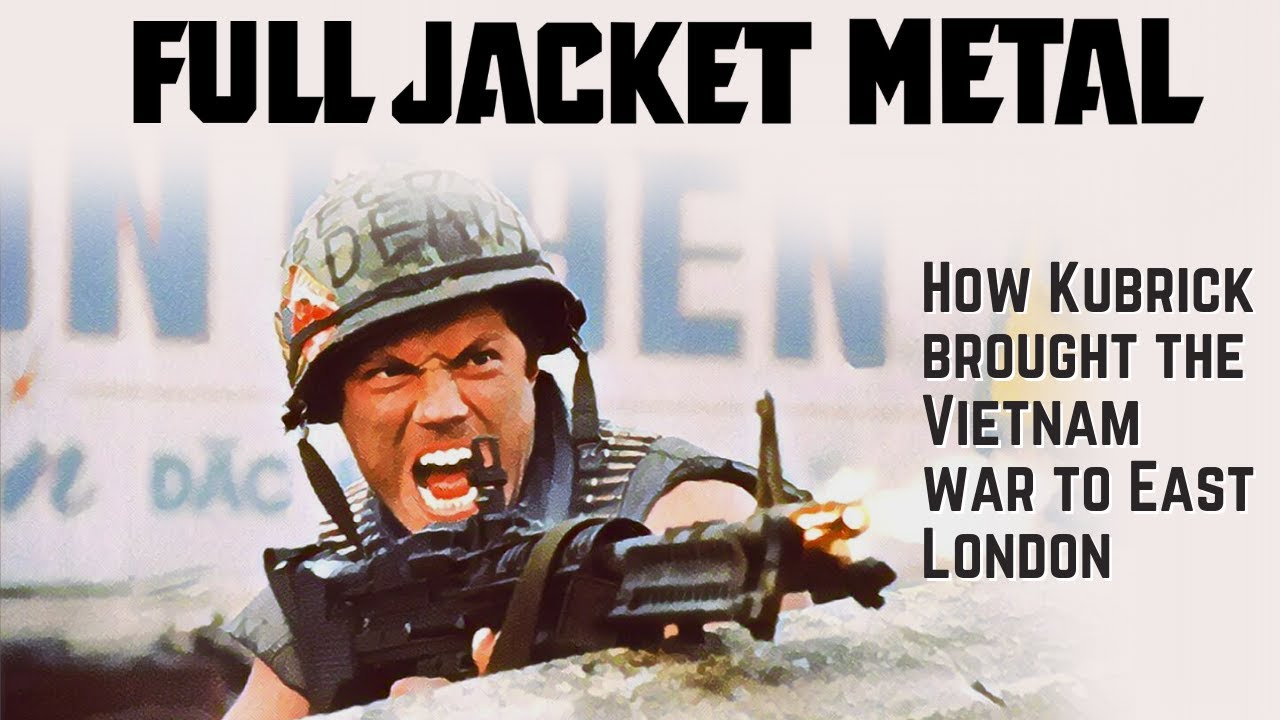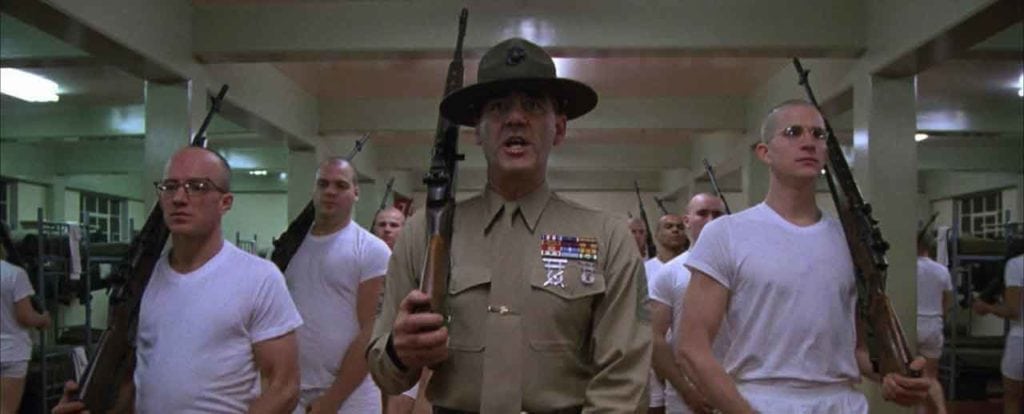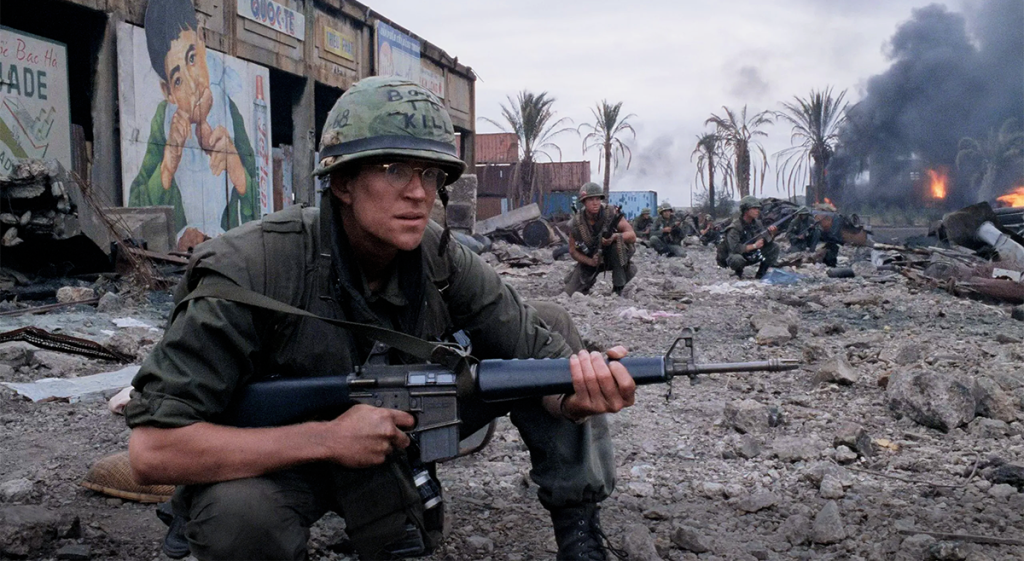🎬 Full Metal Jacket (1987) – War and the Human Condition

Stanley Kubrick’s Full Metal Jacket is a profound exploration of the human psyche amidst the brutal realities of war. This Vietnam War film delves into the psychological transformation of soldiers, capturing the dehumanizing effects of military training and the chaotic nature of combat.
Plot Overview
The film is structured in two distinct halves. The first part follows a group of recruits at the Marine Corps Recruit Depot in San Diego, where they undergo grueling training under the tyrannical Gunnery Sergeant Hartman. This segment showcases the intense indoctrination process that strips away individuality, transforming young men into soldiers.
The second half shifts to Vietnam, where the same characters are thrust into the horrors of war, confronting the physical and moral challenges of battle. It vividly portrays the chaos of urban warfare, the brutality faced by soldiers, and the psychological toll that conflict exacts on them.
Key Themes

- Dehumanization: The film examines how military training aims to break down personal identities and create obedient soldiers, often leading to psychological trauma.
- The Duality of Humanity: Kubrick contrasts the innocence of youth with the horrors of war, depicting the internal struggle between moral values and survival instincts.
- War’s Absurdity: The film critiques the senselessness of war, highlighting moments of dark humor that expose the absurdity of the situation.
Character Development
- Private Joker: The protagonist embodies the struggle between duty and personal morality. His journey from recruit to war correspondent illustrates the conflict between his humanity and the demands of war.
- Gunnery Sergeant Hartman: The brutal drill instructor represents the military’s harsh methods of instilling discipline and conformity, highlighting the theme of dehumanization.
- Private Pyle: A tragic figure who succumbs to the pressures of training and war, representing the psychological impact of military culture.
Visual and Cinematic Techniques
Kubrick’s meticulous direction is evident in the film’s striking visuals and memorable imagery. The juxtaposition of serene landscapes with the chaos of battle captures the stark contrast between the beauty of Vietnam and the horrors of war. The use of wide shots emphasizes the scale of destruction and dislocation experienced by soldiers.
Soundtrack and Sound Design

The film’s score, featuring a mix of classic rock and military chants, enhances the emotional impact and reflects the cultural backdrop of the era. The haunting use of sound, particularly in battle scenes, immerses the audience in the chaotic environment of war, amplifying the tension and fear experienced by the characters.
Impact and Legacy
Full Metal Jacket remains a significant film in the war genre, known for its unflinching portrayal of the Vietnam War and its psychological implications. It challenges viewers to reflect on the nature of conflict, the cost of war, and the resilience of the human spirit.
Perfect For Fans Who Enjoyed:
- Apocalypse Now – For its deep exploration of the psychological effects of war.
- Platoon – For its raw depiction of the Vietnam experience and moral dilemmas faced by soldiers.
- Saving Private Ryan – For its intense battle scenes and focus on the human cost of war.
In conclusion, Full Metal Jacket is not just a war film but a complex examination of the human condition. Through its powerful storytelling, memorable performances, and masterful direction, Kubrick invites audiences to confront the darker aspects of humanity and the profound impact of war on individuals and society.











